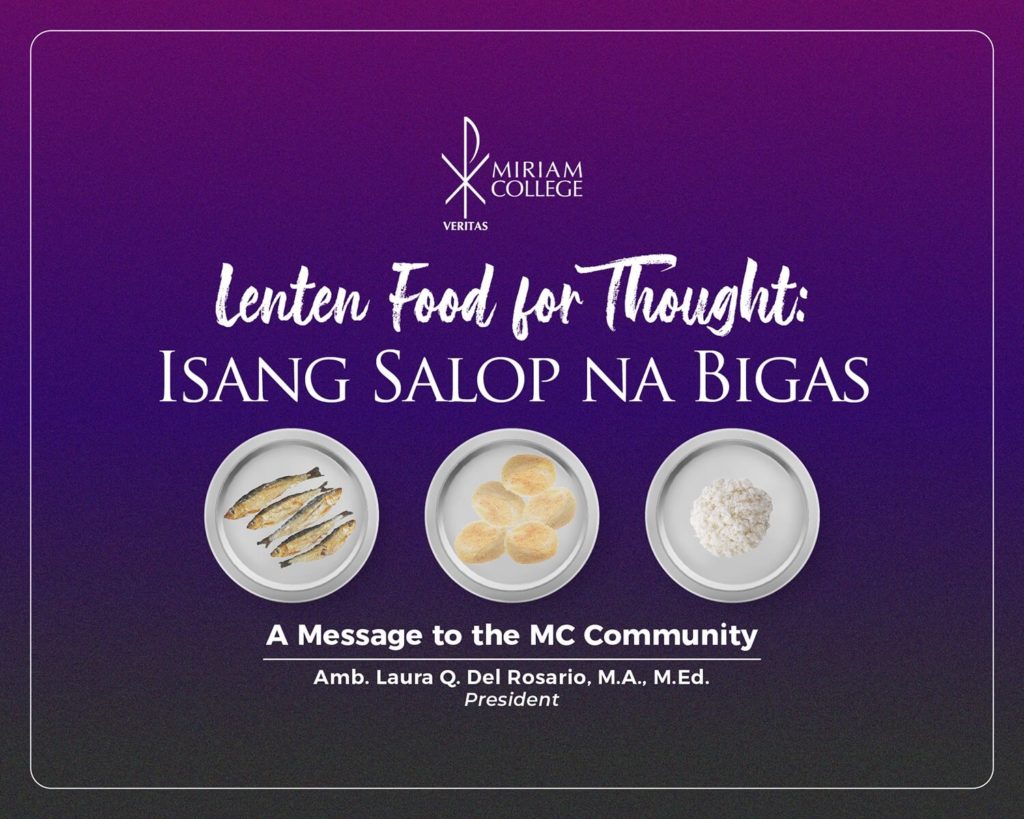A few days ago, the Head of our Spirituality and Mission Office, Mr. Ato and I were talking about expanding leadership training for the leaders in our partner communities (Pansol, Krus na Ligas, Marytown, etc). We noted that these barangays are nestled in the middle of the top two universities of the country, plus Miriam College, but they look like they have not progressed all these years. Not meaning to be judgmental, I commented that if poverty in these communities could not be erased despite the close presence of the best and brightest in our nation, how could government address the economic retrogression of the poorest all over the country?
Mr. Ato pointed out that these informal settlers do not own the land their makeshift houses are on, but that there are those whose children have moved up the economic ladder. But we have no data on how many have moved up, how many have remained where they are, or if their number has expanded through new urban migrants. Is there a research showing how effective intervention measures from various university groups are?
This conversation was followed two days later by an exchange between me and a service employee who lives as an informal settler in the area owned by UP. His salary is augmented by the income from their small sari-sari store run by his wife. I asked him if he knew what a “ganta” was as we were discussing the door prizes of 5-kilo bags of rice during a recent MC celebration. A ganta was used to measure the quantity of rice sold many years ago, before martial law. The country then shifted to the kilo. We talked about how families then bought rice by the ganta which was equivalent to three kilos. I also remember that in our province the beggars went from house to house begging, and they were given a tall can of rice, instead of coins. At the end of one day of begging, a beggar could easily collect one ganta of rice to last for five days to one week. The Tagalogs called one ganta of rice “isang salop na bigas.”
So I asked this employee if his wife sold rice in small packs of one kilo. He replied:” Kung minsan ho, may bibili ng bigas para sa isang kainan lamang.” (“Sometimes somebody would buy rice good only for one meal.”) How much is that? One-fourth kilo, he replied. Buying one ganta of rice (three kilos) as the smallest quantity years ago compared to one-fourth kilo these days?
Coincidentally, there is a Fernando Poe, Jr. movie, “Kapag Puno na ang Salop” in three parts on YouTube. Many still watch the series, but it is shocking to read the comments! FPJ remains the top “idol”, that he is still the viewers’ favorite, “Di nakakasawang panoorin.” Nothing is said about the social theme of his movie series. Nobody has said that “Kailangan ng isang FPJ karakter sa pamahalaan dahil ganyan pa rin ang korupsyon sa malalaki o maliliit na bayan.” There were no comments on the important message of the movie from the FPJ fans.
The growing indifference of many to the social and economic problems around them is exacerbated by the favorite app, Tiktok. Warnings have been issued about Tiktok two years ago, and this has been raised during our MC council meetings. Nobody seems to mind the unproductiveness of watching entertaining Tiktok uploads for hours. And that’s the whole point of the Tiktok algorithm, experts point out. It keeps the viewers addicted to the dance or song uploads while Byte Dance, the owner of Tiktok gathers data about the users. And the viewers become opiated.
With manipulative technology moving faster than our ideas on and plans for improving our education, school administrators find our problems so much bigger and our future so much dimmer. But majority of Filipinos seem happy to be in their Tiktok Lalaland or in the FPJ make believe world where the bad are always defeated. These are their coping mechanisms, one would say. The harsh reality for majority of Filipinos is painful, so why not watch Tiktok?
Another serious phenomenon adds to the worry of being amid the 90% learning poverty rate and the growing poverty in the country. More than a month ago, during a conference, a CHED official told me that one provincial governor wanted to get help in training the teachers in his province handle the increasing number of basic education students in suicide attempts. And just barely a week ago, the vice-mayor of a town who was seated beside me at a dinner asked how much it would cost to train a group of teachers in “first aid-like intervention” in depressive or suicidal cases that are growing in public schools. Both public officials think Miriam College could help in this epidemic which may be national in scope.
These public officials turning to Miriam College―a small private institution with limited resources―for assistance should make me feel proud of how positively MC is perceived. But it also frightens me. Being involved in designing programs that will help our newly born citizens get the right start in life by educating their quite young (and new) mothers with hardly any education become the babies’ first teachers and designing training programs on a large scale for public school teachers on how to handle their students with depression or suicidal thoughts are matters best handled by a national agency or a big university which has more resources and experts. And yet, Miriam College must do what Miriam College can do. We say, “Yes, we shall help” because we believe that we have a duty to do, that we are the channels through which the invisible love of God becomes visible to those who trust us enough to help them.
Let me return to the Lenten food for thought. Our nations’ needs are great. There are many who need access to a variety of resources to survive or to cope with life. We hope that those who have more than enough resources become aware that they have enough for themselves and not just stash these resources somewhere where these remain unused because they are in excess. Hindi pa ba sapat ang isang salop na bigas na kakainin sa isang araw, araw-araw?”
Jesus’s miracle of feeding five thousand from five pieces of loaves and fishes shows that there are enough resources if the distribution system goes through God-inspired hands. “Anyone who has two shirts should share with one who has none, and anyone who has food should do the same.” (Luke 3:11)









